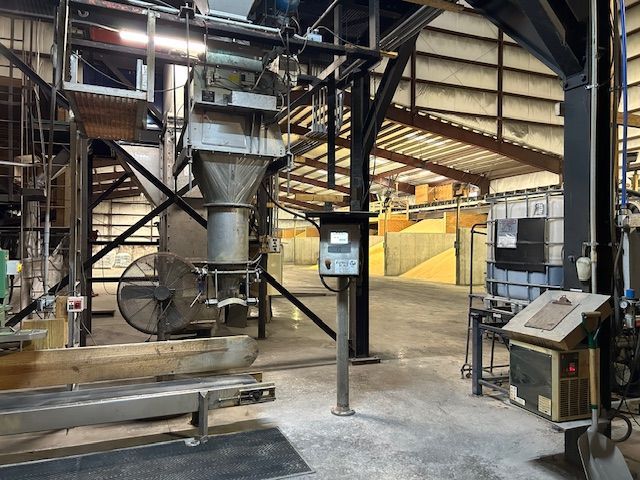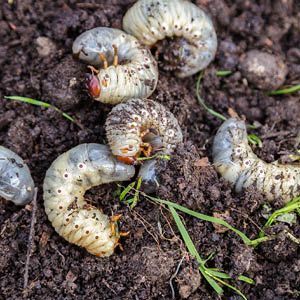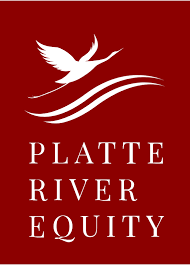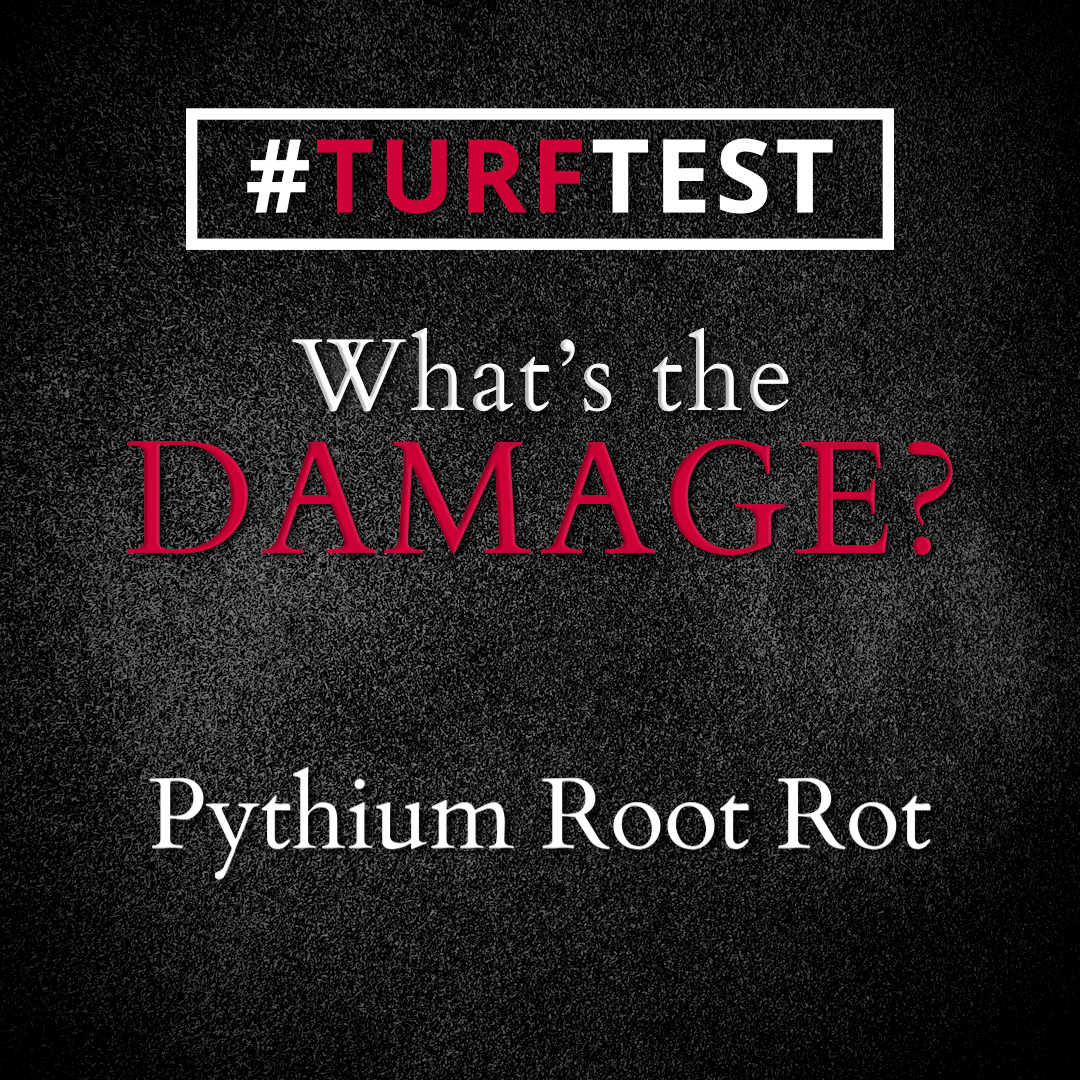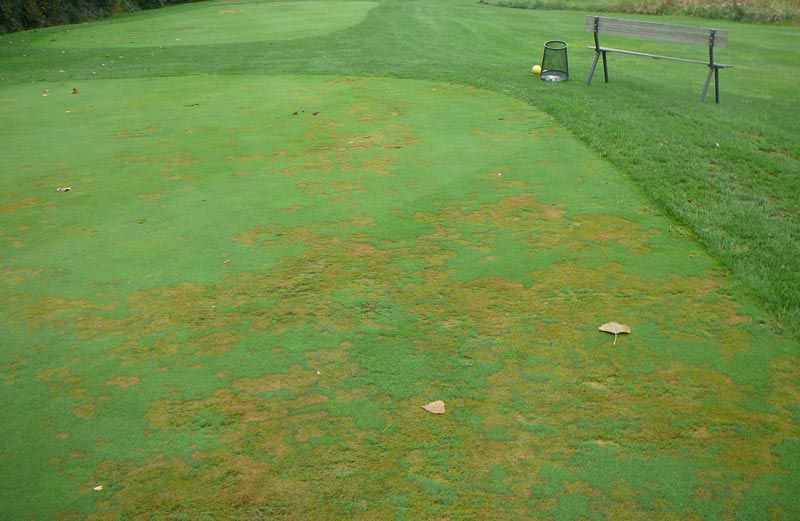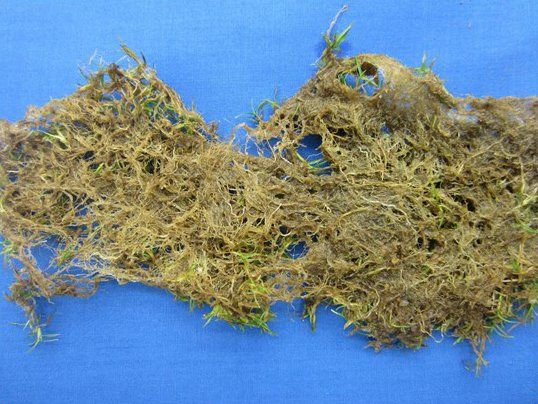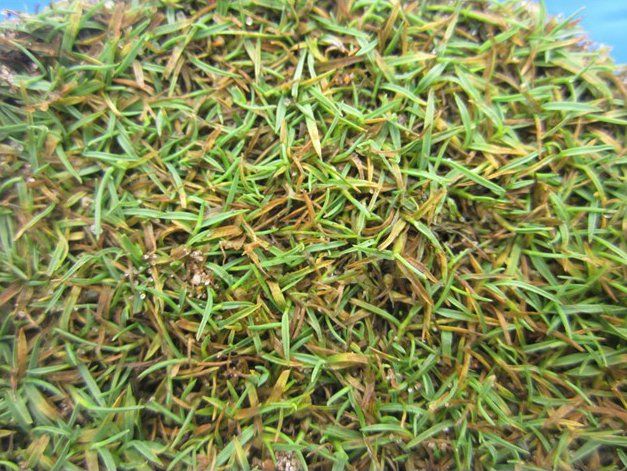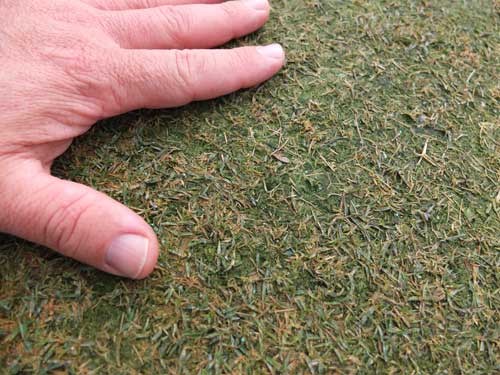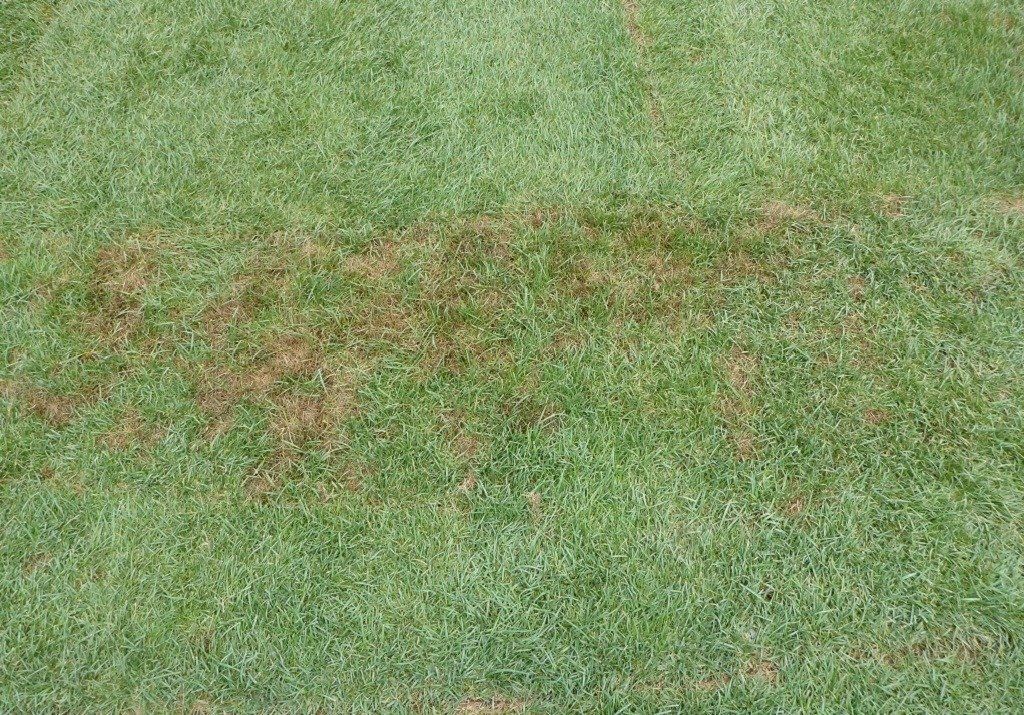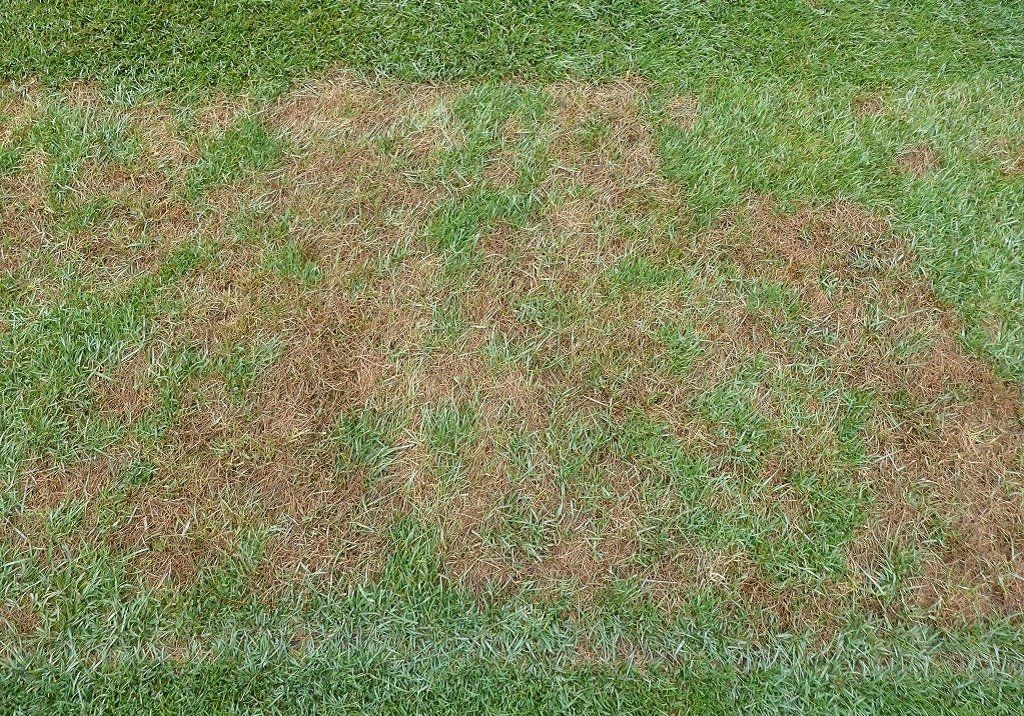DESCRIPTION
Many species of the Pythium genus cause turfgrass disease to the roots and crowns, including Pythium blight and Pythium root rot. While Pythium blight affects the foliar leaves of turfgrass, Pythium root rot attacks the roots. Pythium root rot reduces root growth, which eventually causes the turfgrass to wilt, stop growing and even collapse and die, typically leaving circular spots (2-5cm, upto 15 cm). Pythium root rot can develop anytime of the year and can affect even highly maintained turfgrass when the soil is overly-saturated for several days or weeks. In the cooler/mild weather, Pythium Root Rot typically occurs during air temperatures of 55° to 70°F and is generally slow-moving, causing slow-growing, off-color, thinned areas of turf. In warmer weather, Pythium disease can become more problematic, typically active at temps above 86°F and can cause rapid growth overnight, resulting in large wilted, brown areas of dead turfgrass.
Golf putting greens affected by Pythium Root Rot.
HOW TO IDENTIFY
A Pythium root rot outbreak can affect all species of turfgrass and is usually the result of poor surface or subsurface drainage, over-irrigation, heavy rainfalls, excessive thatch and organic matter accumulation. At first, the disease appears as a small, irregularly shaped spot with a greasy, water-soaked appearance. Once it dries, it becomes an orange and yellow areas that resembles drought stress. On the individual plants, the stolons, rhizomes and roots become dark brown, necrotic, wet and greasy. The density of turfgrass roots is also drastically reduced.
Brown and mushy Pythium-affected roots.
Button
Thinned-out canopy collapsing from root damage.
Button
Brown and mushy Pythium-affected roots.
Button
Thinned-out canopy collapsing from root damage.
Button
THREAT
The pathogens that are responsible for Pythium root rot are present in almost all cultivated soils and attack plant roots, under wet conditions. Therefore, cool-season and warm-season grasses, even highly maintained turfgrasses such as on golf courses, are all susceptible to the unsightly Pythium root rot disease.
Symptoms of Pythium root rot can be non-distinctive, which means it can often be confused with other diseases. To prevent misdiagnosis, a professional sportsturf manager, superintendent or landscaper should be employed to appropriately assess and properly treat the damage.
Three pictures illustrating the different looks of Pythium root rot, which is why it can often be confuse it will other diseases.
HOW TO MANAGE
In order to avoid or control this disease, an emphasis on providing good drainage and irrigation management is key. Avoid establishing turf in areas that are poorly drained or that remain saturated for extended periods of time. If turfgrass is already established, take the following steps to improve its growing environment.
Proper fertilization is important for prevention and recovery on all types of turfgrass or ornamentals. Avoid over application of nitrogen and quick release nitrogen products because they may make turf less tolerant to Pythium root rot growth. Slow-release nitrogen fertilizers with balanced/equal amounts of potassium are suggested. For areas that are routinely affected by Pythium root rot, extra potassium may be useful in the late summer and early fall months. Proper amounts of quality nutrients and ideal soil health will help prevent turf disease from growing and damaging turfgrass. A soil test should always be performed to accurately determine turfgrass's nutrient requirements.
To prevent Pythium root rot on putting greens, it is recommended to reduce organic matter accumulation and thatch, then aerate and top dressed regularly. At Least 15-20% of the putting green surface should be aerated annually, and 5,000 lbs. of topdressing should be applied per 1,000 sq. ft. each year. Pruning or removing trees surrounding putting greens will increase sunlight penetration and air circulation, which will reduce the activity of Pythium root rot substantially. In some cases, installation of high-powered fans will assist in turf recovery by helping improve air movement where it is typically restricted. In rare cases for some putting greens with poor internal drainage, reconstruction may be the only practical long-term solution for Pythium root rot elimination.
For residential or commercial turfgrass, avoid over-fertilization with quick-release nitrogen and use
slow release nitrogen instead.
Avoid excessive thatch
that exceeds ½ inch. Promote vigorous root growth by raising mowing height and reducing mowing frequency to reduce plant stress. Do not mow when the grass is wet or the foliar mycelium is present. Be sure to avoid late night
irrigations
that could leave turfgrass wet for long periods of time, which makes it susceptible to disease.
For gardens and potted plants, remove and discard Pythium root rot diseased plants. Incorporate a compost of 20% pine bark in potting mixture, as it’s shown success at providing some control of Pythium root rot. For flowers, specifically, solarization has seen success of control of dampening of the soil to help control Pythium root rot.
For fungicide applications for warm-season Pythium diseases, fungicide applications should be made preventively or at the very first onset of disease symptoms. For the cool-season, fungicide applications should be made when symptoms of Pythium disease develop. Resistance to certain chemistries, like mefenoxam, can develop, so it’s important to practice resistance management by alternating use of fungicides from different chemical classes.
For professional fertilizers, slow-release fertilizers and soil amendments, including AMP-XC™ enriched products available, please visit TurfCare’s online Product Catalog.
For green industry professionals or others interested in ordering Turfcare products, please contact our Customer Service
to find a distributor near you.
References:
https://www.turffiles.ncsu.edu/diseases-in-turf/pythium-root-rot-in-turf/
https://www2.ipm.ucanr.edu/agriculture/turfgrass/Pythium-Root-Rot/
https://ag.umass.edu/turf/fact-sheets/pythium-diseases-of-turf
https://plantpath.psu.edu/pythium/module-1/disease
https://blogs.k-state.edu/turf/tag/pythium-root-rot/
https://www.uaex.edu/publications/pdf/fsa-7565.pdf
http://ipm.ucanr.edu/PMG/r280100211.html
http://ccenassau.org/resources/-turfgrass-pythium-blight-and-root-rot
https://www.greencast.com.au/disease-foliage-andor-roots/pythium-root-rot
Photos:
https://www.greencast.com.au/disease-foliage-andor-roots/pythium-root-rot
https://www.environmentalscience.bayer.us/turf-and-ornamentals-management/golf-course-management/talking-turf/fall-winter-pythium-root-rot-in-bermudagrass-greens
https://blogs.k-state.edu/turf/tag/root-rot/
